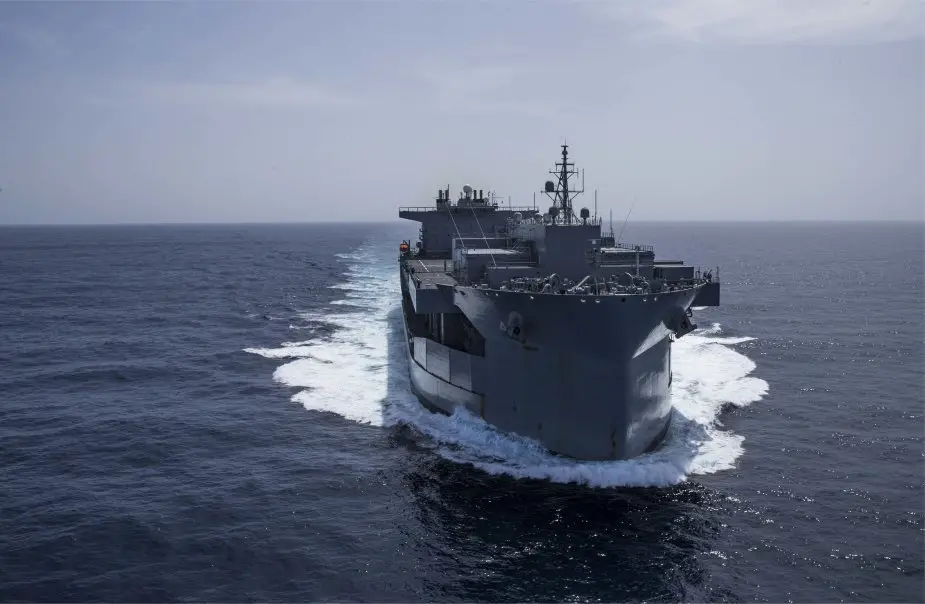Breaking news
General Dynamics to build a sixth ESB ship and two more John Lewis class fleet oilers.
According to information published by General Dynamics NASSCO on August 8, 2022, the firm announced that it received $1.4 billion in U.S. Navy contract modifications for the construction of a sixth Expeditionary Sea Base ship (ESB 8) and two additional John Lewis-class fleet oilers (T-AO 211 and 212).
Follow Navy Recognition on Google News at this link
 The Expeditionary Sea Base USS Hershel "Woody" Williams (ESB 4) sails in the Atlantic Ocean. (Picture source: U.S. DoD)
The Expeditionary Sea Base USS Hershel "Woody" Williams (ESB 4) sails in the Atlantic Ocean. (Picture source: U.S. DoD)
This award comes in addition to $600 million already received to procure long-lead time materials for the same ships. The contract modification also provides an option for the Navy to procure an additional oiler, T-AO 213, bringing the total potential value to $2.7 billion for the four ships.
Construction of the four ships is scheduled to begin in the third quarter of 2023 and continue into 2027.
In 2011, the Navy awarded NASSCO with a contract to design and build the first two ships in the newly created Mobile Landing Platform program, USNS Montford Point and USNS John Glenn.
The program evolved, adding USS Lewis B. Puller (ESB 3), USS Hershel “Woody” Williams (ESB 4), USS Miguel Keith (ESB 5), the future USS John L. Canley (ESB 6), and the future USS Robert E. Simanek (ESB 7), configured as ESBs.
The ESBs are configured with a 52,000 square-foot flight deck, fuel and equipment storage, repair spaces, magazines, mission planning spaces and accommodations for up to 250 personnel.
The ships are capable of supporting multiple missions including Air Mine Counter Measures (AMCM), counter-piracy operations, maritime security operations, humanitarian aid and disaster relief missions and U.S. Marine Corps crisis response. It will also support MH-53 and MH-60 helicopters and will be upgraded to support MV-22 tiltrotor aircraft.
Self-defense capability is limited to crew-served weapons only. The T-ESB was designed to operate in a non-hostile environment with low/negligible threats to the ship. However, mine countermeasure (MCM) operations may require the ship to operate close to littoral threat areas.
The lack of self-defense capability renders the ship dependent upon other naval combatants and joint forces for protection in the littoral operating environment.
The ships have an overall length of 239 m, a beam of 50 m, and a displacement of 90,000 tons. The propulsion system of the ships includes FM/MAN 6L48/60 Common Rail (CR) Medium-Speed Engines and a 24 MW diesel-electric plant. They can reach a top speed of 15 knots (28 km/h) with a maximum cruising range of 9,500 nautical miles (17,594 m).




























